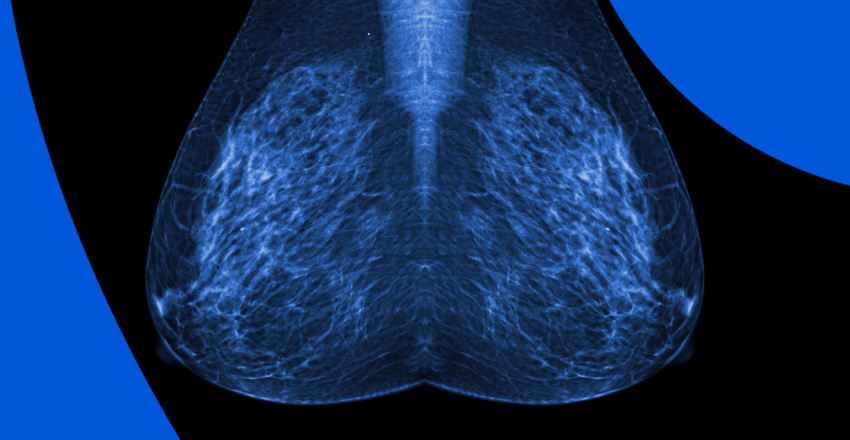Abdominal CT Scan with Contrast: What It Is and How It Works
February 29, 2024
Read More
Aside from non-melanoma skin cancer, breast cancer is the most common cancer for women, with an estimated 1 in 8 developing the disease in their lifetime. Mammogram screenings help identify some of these cancers, and they are generally recommended between ages 50 and 74. While mammograms are the best-known breast screening tool, there are many others your doctor may recommend based on your circumstances. Here are some of the diagnostic breast screening options and when they might be used.
Mammogram: Mammograms, or low-dose X-rays, are the most common screening exams for those with an average risk for breast cancer. Those with high risk may be asked to get a mammogram and breast MRI. During a mammogram exam, your breast will be compressed as the X-ray is taken, and the technician may take X-rays from several angles. A radiologist will interpret the exam and summarize the results. The screening frequency generally depends on your age and your risk factors, but your doctor can share those recommendations.
Clinical breast exam: These manual exams performed by a physician, as well as self-exams, are no longer recommended for those with an average risk for breast cancer. Researchers have not found evidence that they help detect early breast cancer, if women are already getting mammography screening. The breast exams may still be performed at a doctor visit, especially if the person is at higher risk or feels a potential lump on their own.
Breast ultrasound: Ultrasound relies on sound waves and echoes, not radiation, to create pictures that may show breast changes or masses. That includes having a greater ability to differentiate between fluid-filled cysts and solid masses. Lumps still may still require additional testing. Ultrasound may be recommended for those with dense breast tissue, as this tissue is harder to see through on mammography, and ultrasound allows the radiologist to view the tissue through multiple angles. Ultrasound is not recommended as a stand-alone breast screening tool, but as a supplemental or follow-up tool.
Breast magnetic resonance imaging (MRI): Breast MRI also does not use radiation, but instead relies on magnets and radio waves to create pictures of the internal breast tissue. It may be recommended for those at high risk of breast cancer, along with a mammogram. Like ultrasound, it is not used as a solo screening test, as mammograms may find some cancers missed by MRI. Breast MRI is a more involved exam, as it requires the use of contrast dye injected in your vein. Another downside of breast MRI is that it may find more false positives than mammograms – tissue that may not actually be breast cancer, but should be tested just in case. Those with false positives may end up needing biopsies. For this reason, MRI is not used as a screening tool for those with average breast cancer risk. It may be recommended if a person has suspicious findings on exam or from symptoms, and the initial mammogram and breast ultrasound don’t show clear findings.
Digital breast tomosynthesis (DBT/3-D mammography): This advanced type of mammogram relies on low-dose X-rays and a computer reconstruction which creates 3-D breast images. Traditional mammograms use 2-D images that may hide some abnormal tissue if it overlaps with normal tissue in the picture. This 3-D DBT technology allows the radiologist to view the breast in layers or slices, rather than as single images. It can be used for both screening mammography and for those with symptoms. An advantage is that it’s been shown to have higher accuracy and fewer false positive rates, no matter the level of breast density. It uses a higher radiation dose than standard mammography, is more expensive and can take longer to interpret.
Newer screening tools
There are some screening tools that are less popular and not accepted yet as standard. That means not all radiology offices offer them and they may not be covered by insurance. While there are many being investigated, here are a few you may have heard about.
Thermography: This screening tool measures the person’s skin temperature with a specialized camera to determine if there may be cancer cells growing in the breast. The thermographic image may show “hot spots” in a different color than the tissue around it. Any tissue with an inflammatory response will be seen as a “hot spot,” making this a less specific and telling exam. If someone has a hot spot, they may be sent back for a mammogram.
Molecular breast imaging (MBI): MBI uses nuclear medicine imaging, meaning a tracer is injected into the person’s blood, to provide high-resolution functional breast tissue images. It may be used as a follow-up for findings like a breast lump or abnormal mammogram. It can also be used if a person is already diagnosed with breast cancer, to understand the extent of the disease.
It’s important to follow your doctor’s advice for timing and types of breast screening exams. Given that it is important for doctors to compare current and past exams, it is helpful to share these images with providers, especially if you change health systems or doctors and they don’t have quick access to your past images. PocketHealth makes this easy, inexpensive and secure to do. Maintaining access to your records electronically enables you provide your doctor with links to compare these scans over time. PocketHealth also gives you access to your breast screening reports so you can read them and ask questions, making sure you’re staying on top of your health.